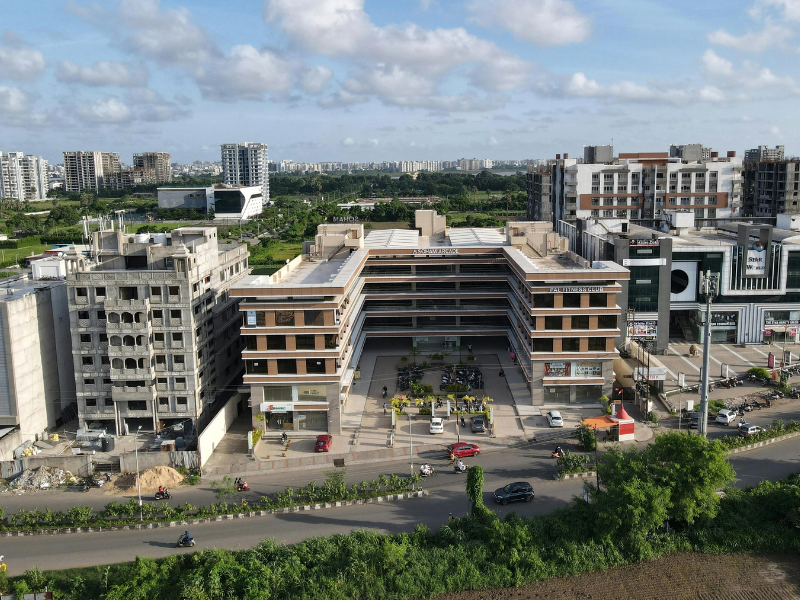Introduction
Once you have decided to buy a home, there are many factors you need to consider. Don’t jump to a final decision so quickly. While choosing a house, you should explore the type of house you want to live in and the available surroundings. Now that buying a home in India is not so affordable, financing options also need to be considered.

Table of Contents
- What is the Role of TDR in Construction?
- Benefits of TDR to Landowners
- How Does Transferable Development Rights Work?
- Benefits of TDR
- 3 Types of Transferable Development Rights
Regarding financing, home buyers can also avail different types of loans from different lenders to purchase a home. They approach a reputed realtor who offers some of the best-quality projects at the most affordable prices. Once you plan to work with a realtor, you need to have exceptional negotiation skills. To stand your ground in negotiations, you need to be aware of your rights as a buyer.
What is the Role of TDR in Construction?
Transferable development rights are zones that protect certain lands with conservation value. Such grounds include agricultural lands, cultural and natural resources, and open community lands. In relation to real estate, transferable development rights refer to rights that enable developers to develop through the permitted Floor Space Index (FSI).
This is done with respect to the neighborhood or the specific land where the construction takes place. It provides protection to landowners. It benefits them in many ways.
Benefits of TDR to Landowners
Through transferable development rights, landowners who do not wish to develop a particular part or all of their land are entitled to certain compensation. These landowners get the option to legally share their development rights with the municipal corporation.
In particular, fair compensation should be given to these landowners. Moreover, the value of such assets is enhanced after transferable development rights are imposed. Without TDR in real estate, it is almost impossible to use the land for regrowth or redevelopment.
How Does Transferable Development Rights Work?
A TDR is a certificate obtained by a property owner from a municipal corporation indicating that a particular property is available for public use. Some prominent public services that can use the property include roads, schools, and parks. The owner may also acquire certain exclusive rights over the prospective property.
Allows transfer of an individual’s property to municipal corporations using a TDR certificate. This not only helps in reducing the transfer process but also in the acquisition. To better understand TDR, let’s consider an example.
Example
Let’s take Mumbai as an example. This urban city has already developed areas like Juhu, Andheri, and Colaba. Rapid urbanization has led to overcrowding throughout the city. To promote construction, the municipal corporation will now focus on less developed areas like Mira Road and Navi Mumbai. Through TDR, properties are constructed on lands given by owners in return for reservation rights. This will help in promoting growth in Navi Mumbai and boost the real estate sector.
Benefits of TDR
Acquiring land for the construction of public utility facilities in urban areas has become very difficult today. It is not only time-consuming but also very complicated. This makes it difficult for the municipality to build parks and roads.
Things eventually become easier when the land has a TDR certificate. The Municipal Corporation already has information regarding the assets that can be used for these activities. Land acquisition will also become easier through these certificates.
3 Types of Transferable Development Rights
Some of the popular transferable development rights in real estate are as follows.
Slum TDR
The Slum Rehabilitation Authority has approved the slum rehabilitation project. Slum TDR allows developers to construct housing options under slum rehabilitation schemes.
Heritage TDR
If the owner of any historic building will receive a Heritage TDR certificate to cover the damage to the property. It is empowered with the permission of the state government.
Reserved Plot TDR
In respect of a reserved plot, the owner may construct a compound wall for a portion of the property. The remaining amount can be returned to the municipal authority. A printed development right certificate for the property concerned is provided to the land owner. This applies only to reserved assets.
Conclusion
Before starting the construction of any project, real estate developers must adhere to all the rules and regulations. They can check the laws and regulations related to transferable development rights. Adherence to the TDR will help improve the validity and usability of the project. For more information, visit Openplot.
Also read: What Are the Benefits of Having Apartment Amenities?